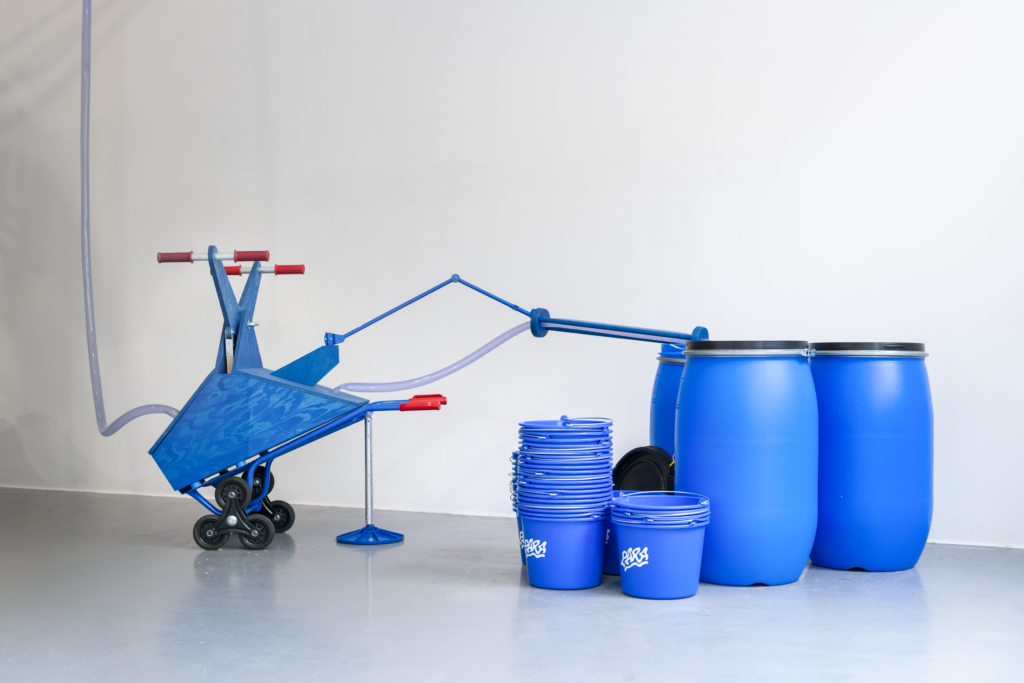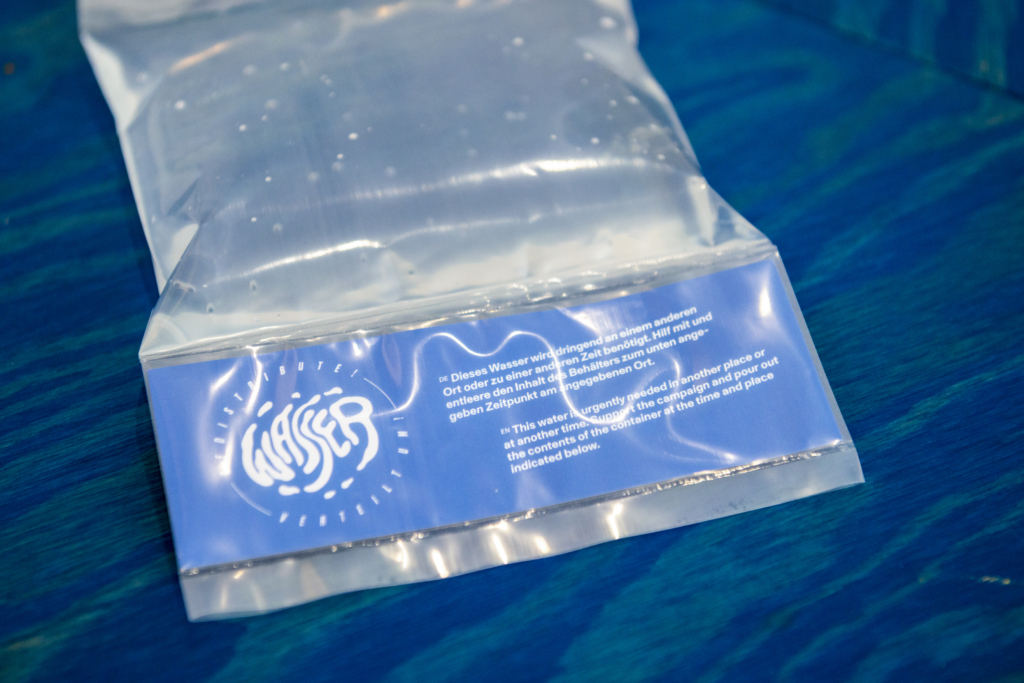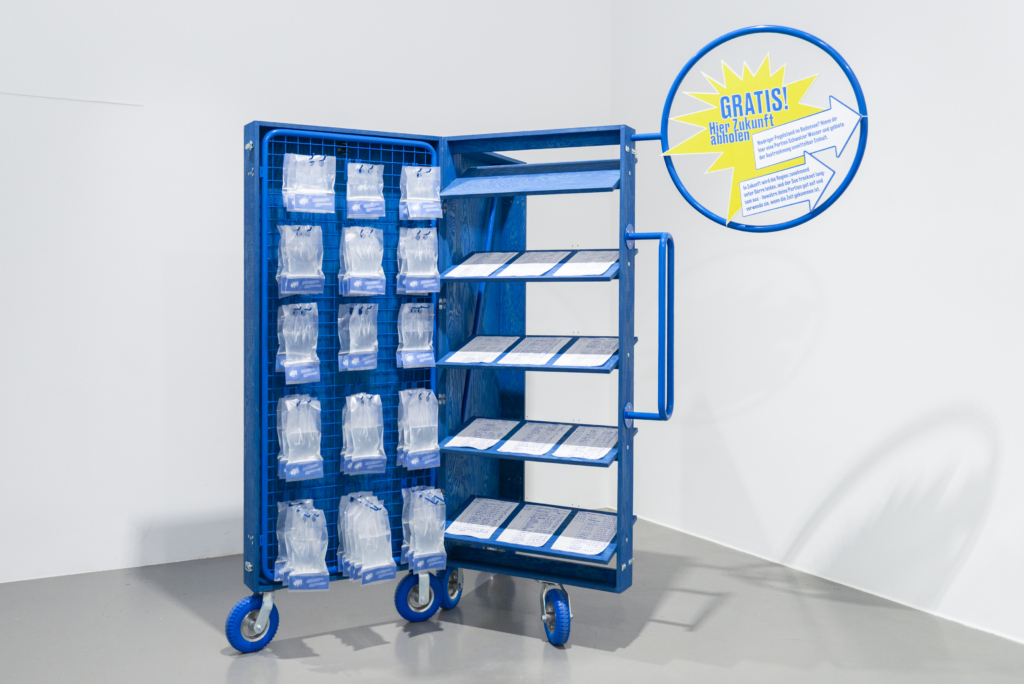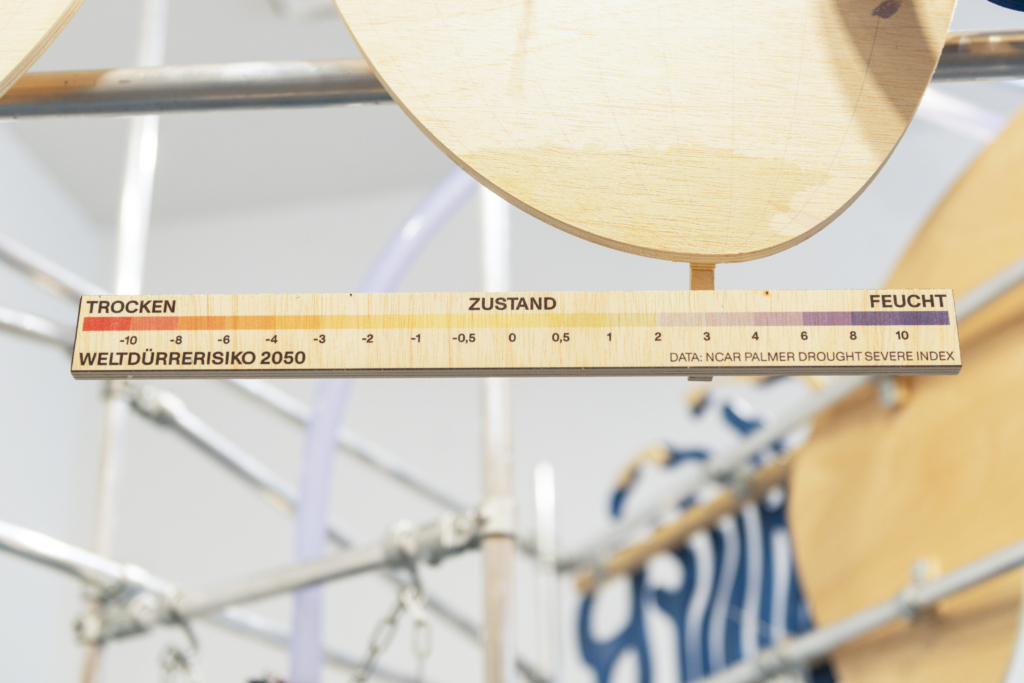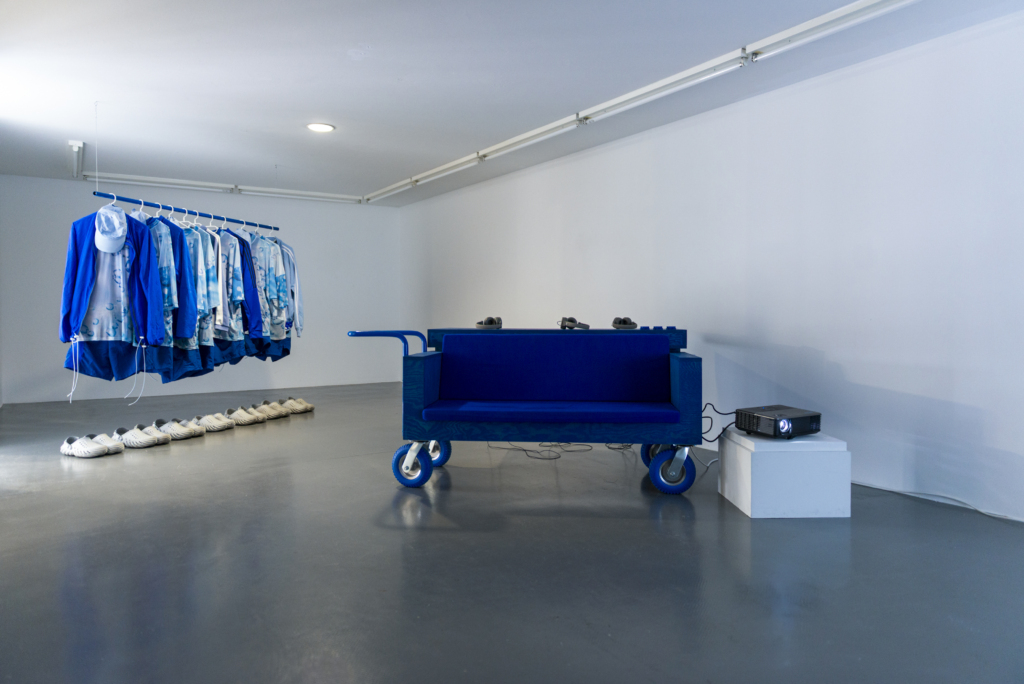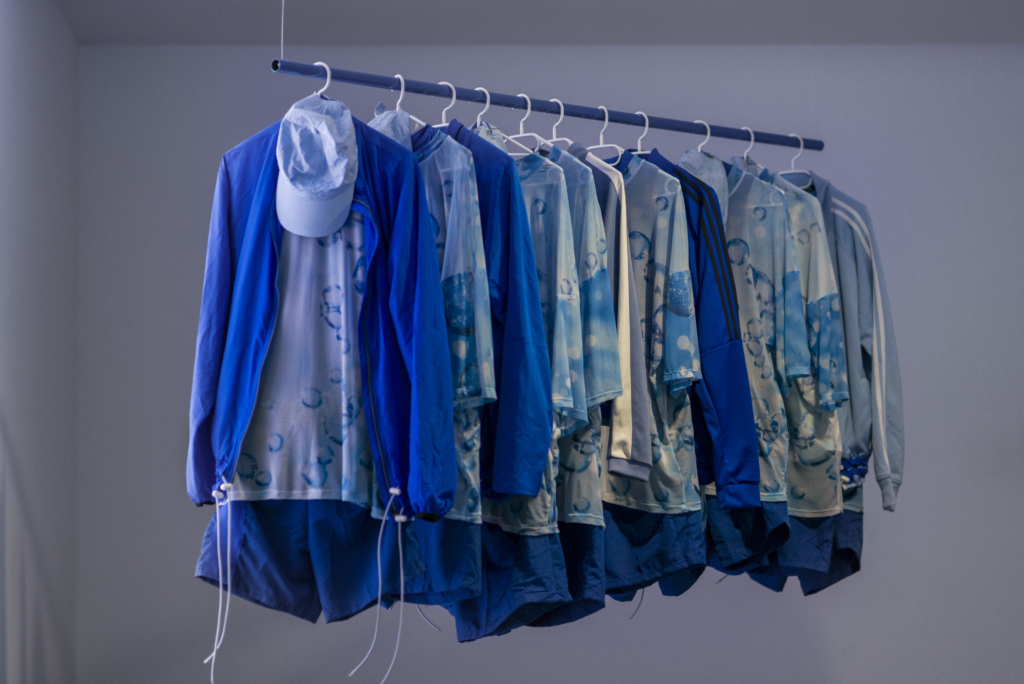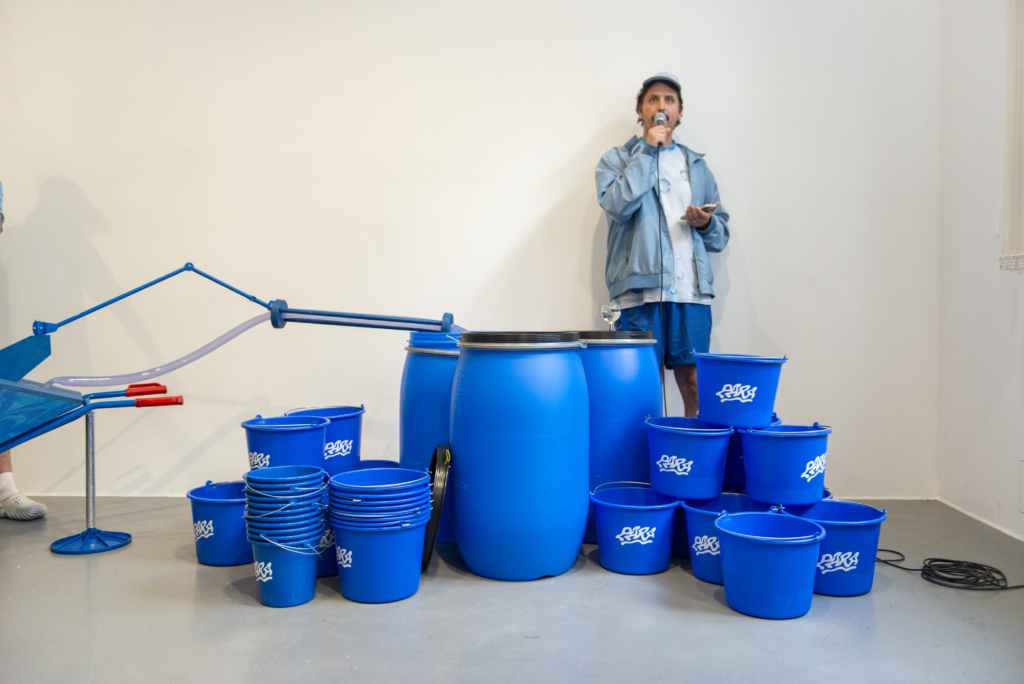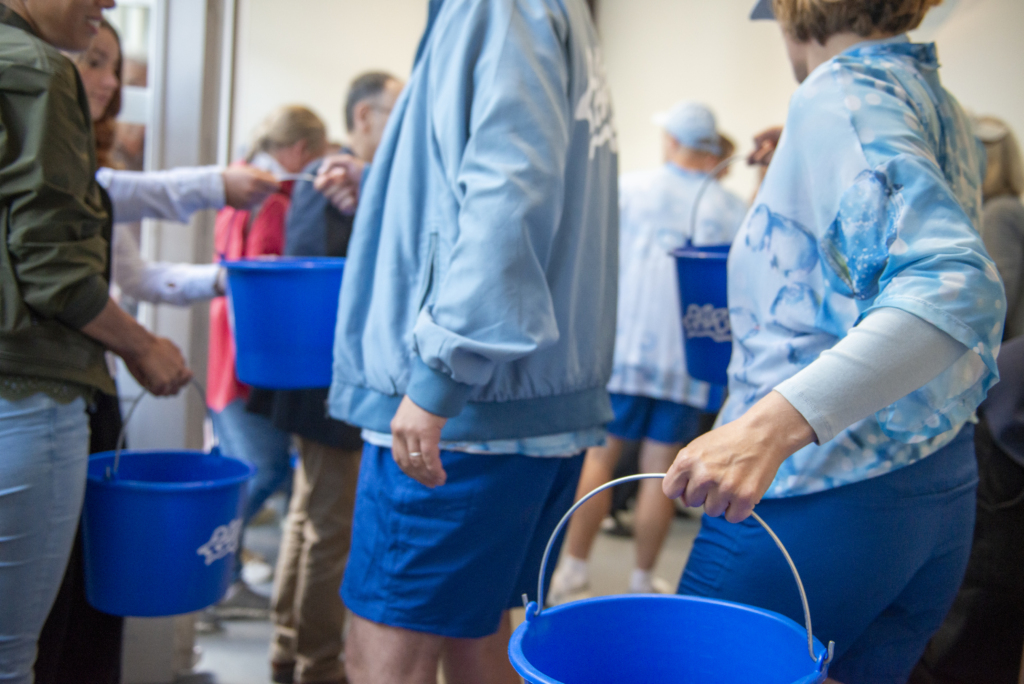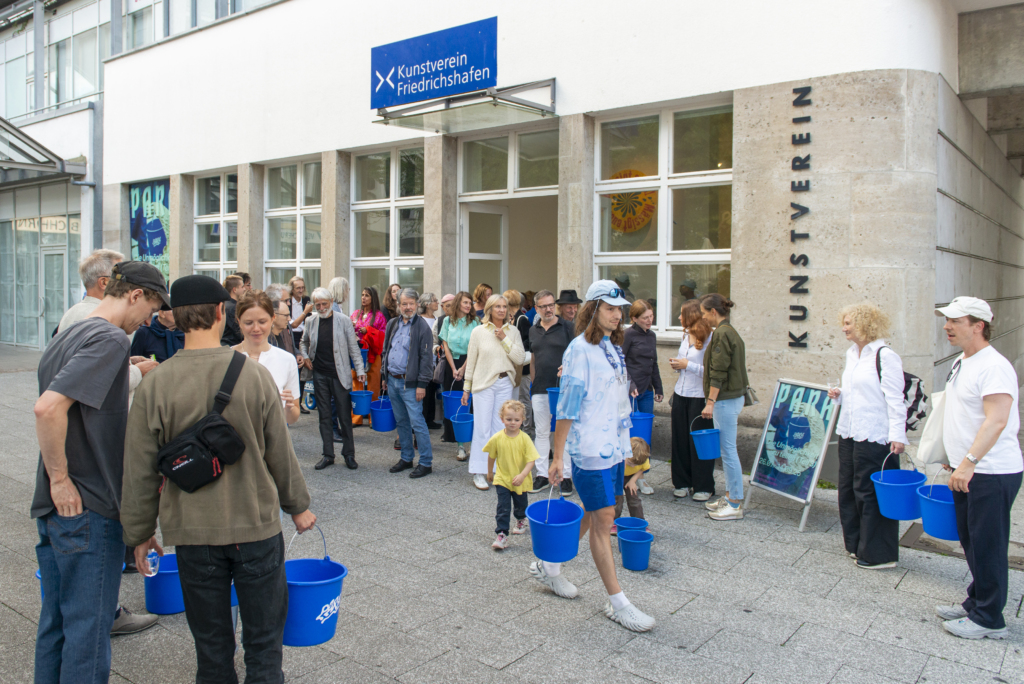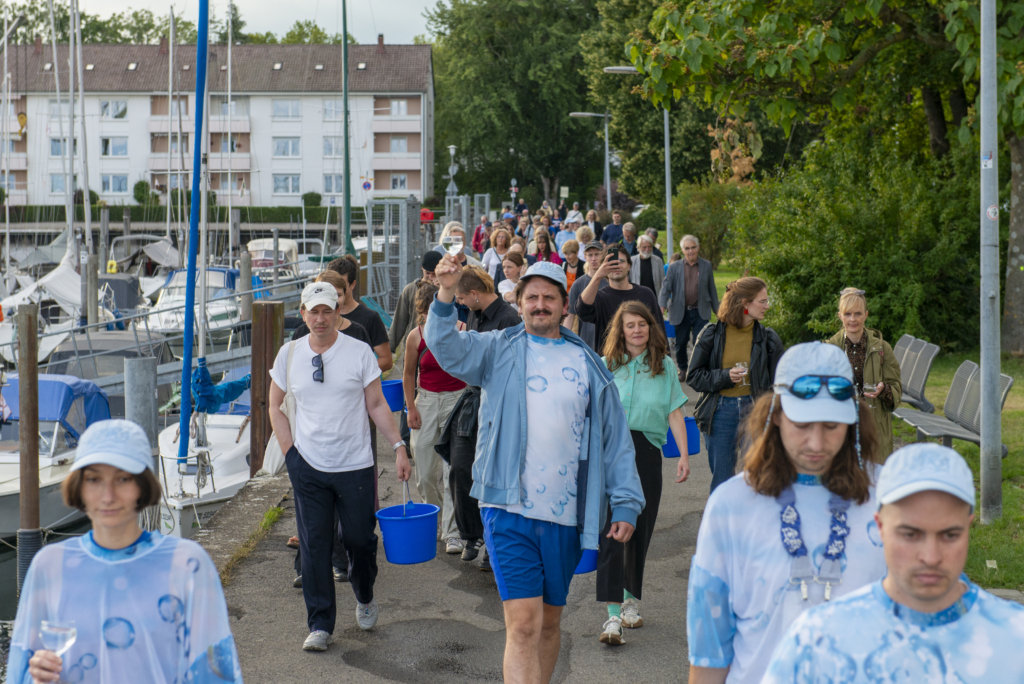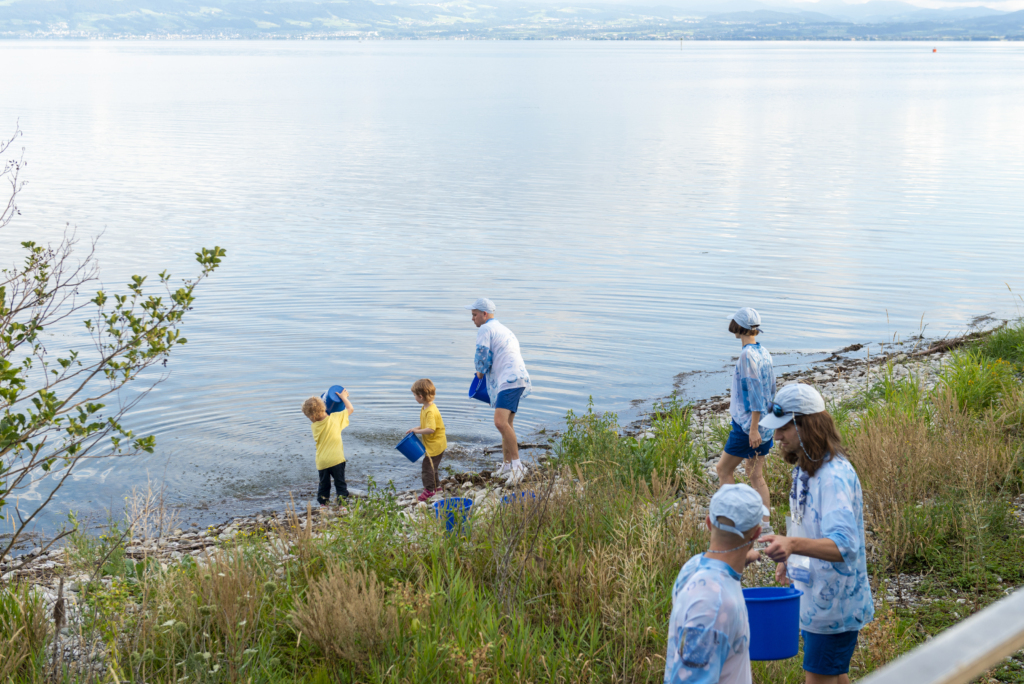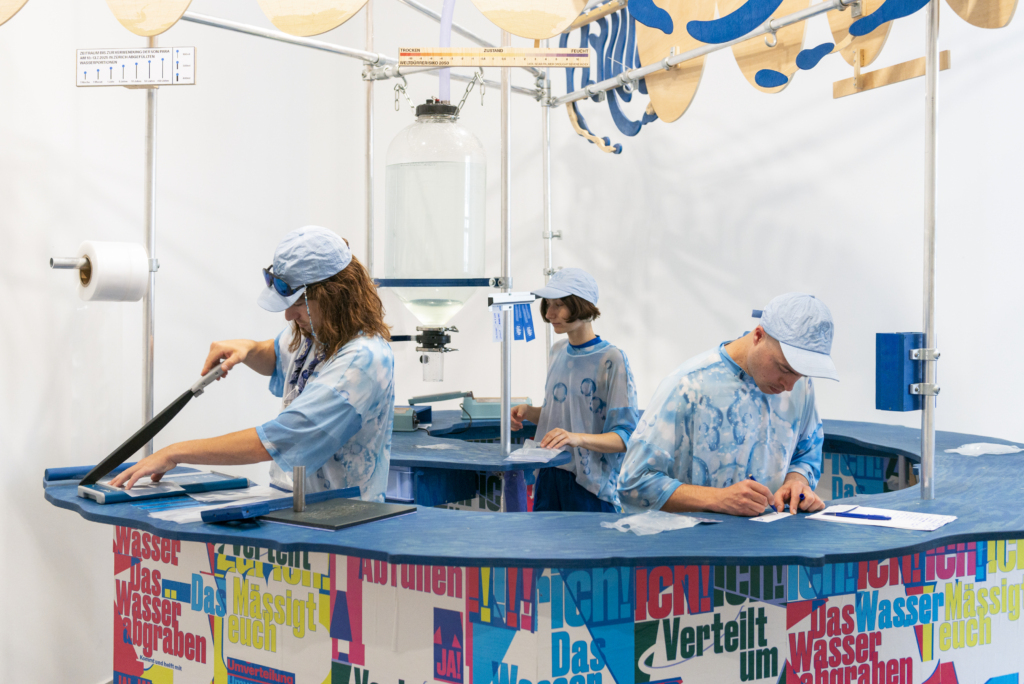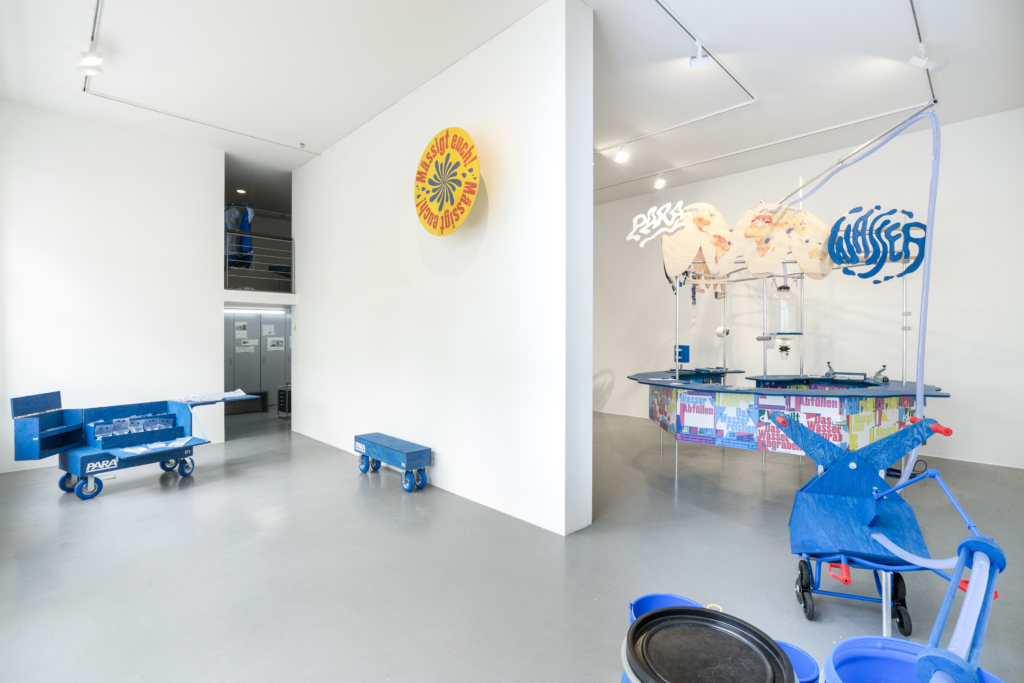The exhibition Die Unmöglichkeit zu teilen (Teil 3) at Kunstverein Friedrichshafen focuses on the interconnections between ecological, economic, and sociocultural future scenarios related to the issue of water supply – the central research topic of the PARA collective this year.
In light of the catastrophic climate changes of recent and coming years, the conflict potential inherent in the unequal distribution of water becomes evident: while some places experience flooding, rivers are drying up elsewhere. Lake Constance, on whose shores the Kunstverein Friedrichshafen is located, is also directly affected by persistent drought and a lack of precipitation. To prevent the situation from worsening, a general ban on the extraction of surface water has been in place throughout the Lake Constance district since June. Even though neither shipping nor the water supply is currently under acute threat, the lake’s low water levels cast the shadow of worsening crises to come. Elsewhere, the situation is already much more serious: last year, several regions in Spain declared a state of water emergency. Only recently, the German Foreign Office issued a travel warning for large parts of southern Italy due to ongoing water shortages.
Using an installation-based redistribution system developed by PARA and situated in the exhibition spaces of Kunstverein, the group addresses questions around the redistribution of water as a resource. Drinking water sourced directly from Switzerland – the water reservoir of Europe – is presented in bottled portions. PARA extracted this water from the Swiss water cycle and transported it out of the country. Visitors are invited to actively take part in redistributing this precious raw material: to raise the water level of the lake just outside the door, or to store it in the basement in preparation for the coming apocalypse?
The Redistribution Kiosk forms the central part of the installation on the ground floor: water portions are bottled and distributed at a spiral-shaped structure. A map offers the audience an overview of redistribution efforts that have already taken place. On the upper floor, the back office of the redistribution campaign is located. Here, the audio installation Chronik der Austrocknung can be heard, and PARA offers insight into the development of the project.
During a performance held the day after the opening of Die Unmöglichkeit zu teilen (Teil 3), the audience is invited to participate directly in the redistribution of the resource in accordance with the artists’ instructions. Together, the drinking water extracted in Switzerland will be returned to Lake Constance, counteracting the falling water level.
PARA is experienced in alienating itself from the status quo and in using artistic, speculative strategies to question what seems normal and customary: Will the lake’s water level drop in the future when the Swiss glaciers have melted due to climate change or if Switzerland continues to regulate the inflow? Are the residents of the Lake Constance region the ones who will suffer in the battle over water as a resource? And does the region’s relative abundance of resources imply an obligation to share?
To emphasize the temporal redistribution of drinking water, part of the water appropriated in Switzerland will be transferred to the collection of the neighboring Zeppelin Museum Friedrichshafen in sealed containers after the end of the exhibition. Through this musealization of a raw material that today still seems abundant, PARA anticipates a future of scarcity and ensures its optimal preservation.
PARA is a group consisting of ten artists, designers, architects, and scientists from various disciplines. Their performances, installations, campaigns, exhibitions, and public space interventions have been presented in collaboration with Künstler:innenhaus Mousonturm, Frankfurt am Main, Neue Gesellschaft für bildende Kunst, Berlin, GRASSI Museum für Völkerkunde, Leipzig, as well as within the framework of numerous festivals.
A production by PARA. Initiated and made possible by Kunst im öffentlichen Raum (KiöR) of the City of Zurich. Supported by the Brunhilde Moll Stiftung and Ritter Sport Kunstförderung.

